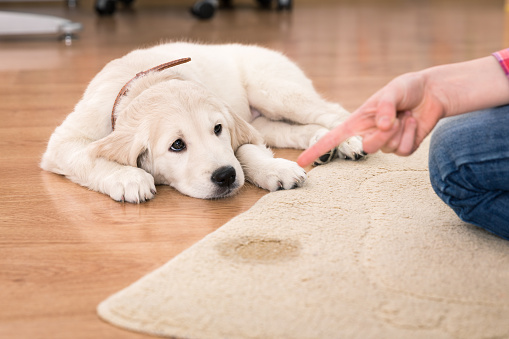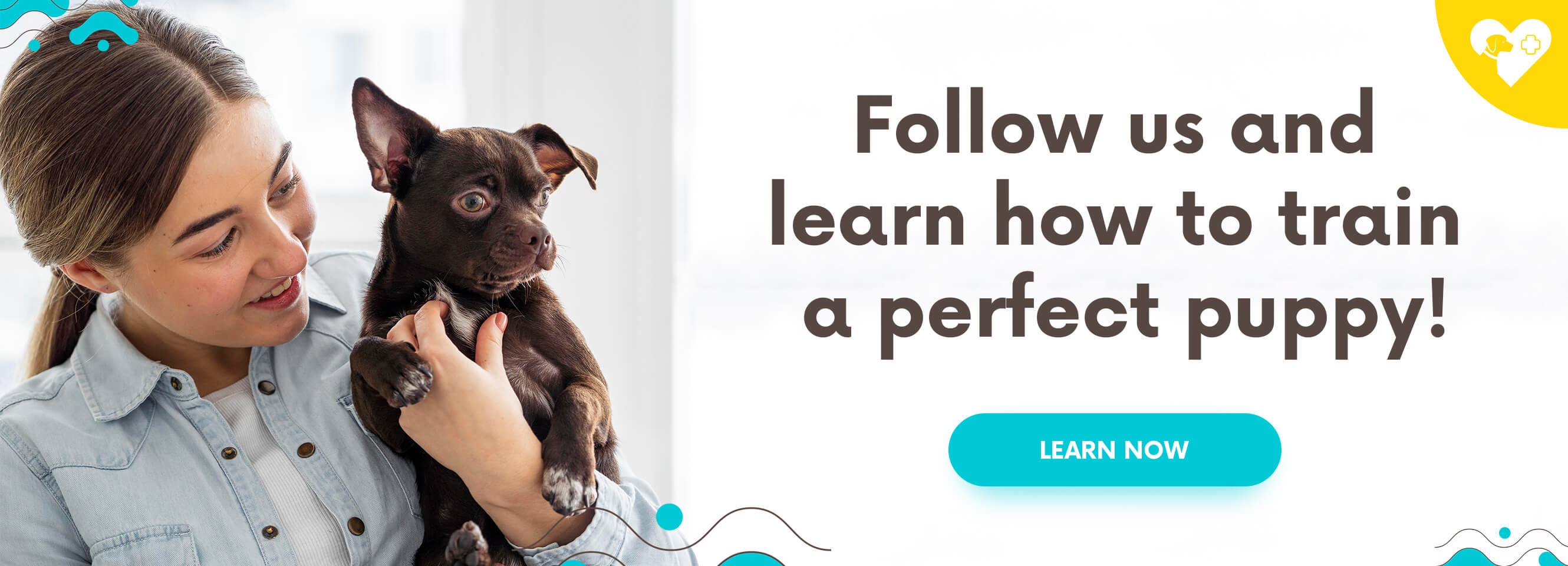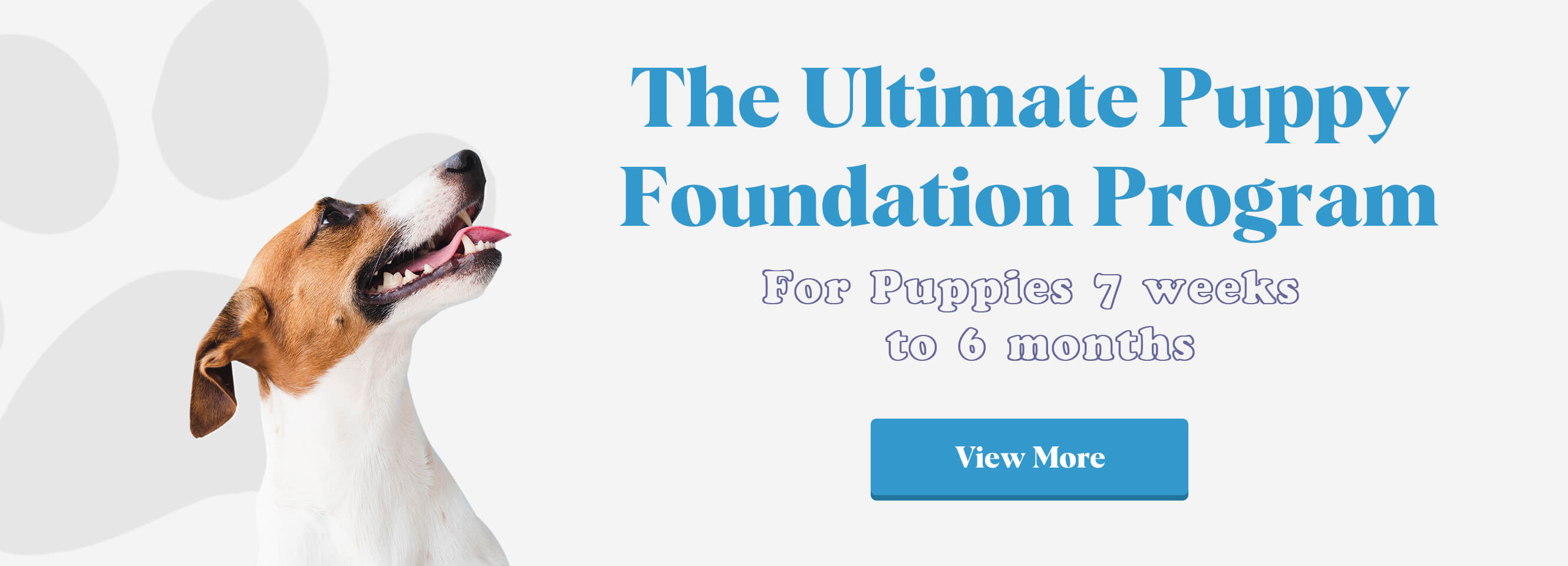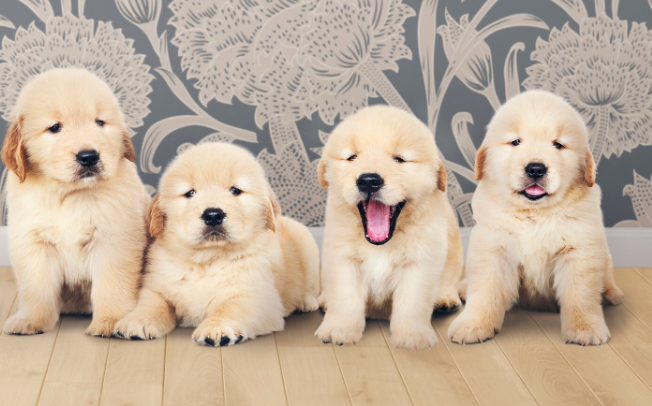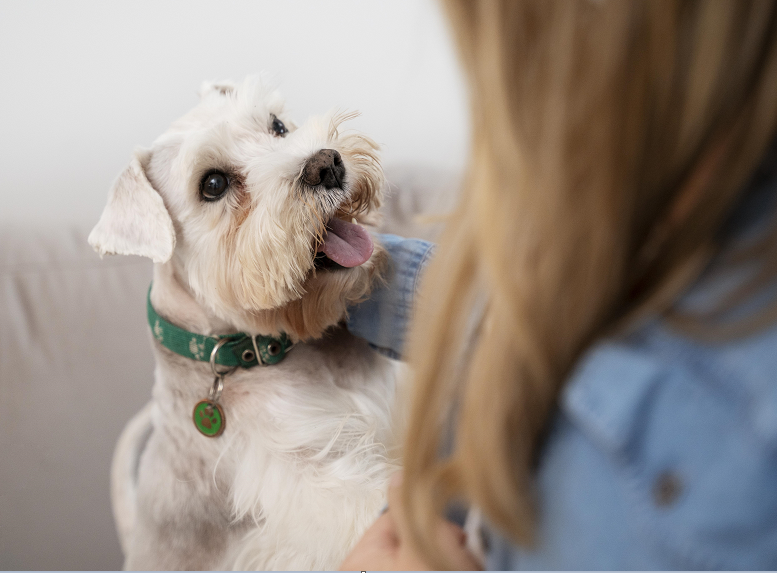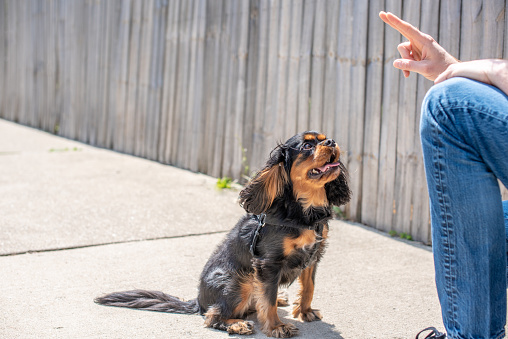
Dogs interact with the world through their sense of smell, hearing skills, vocalization, and body language. While still puppies, dogs are still learning what their role in the world and their family is. Just like human babies pups mimic behaviors, explore their environment, and pick up on social cues from their family members. Learning how to properly interact with other animals and people is an essential skill that every pup parent should teach their beloved paw friend.
What Does Basic Obedience Include?
If we are talking more specifically, basic obedience includes commands such as “sit”, “stay”, “recall” (knowing his/her name and responding to it), “walking on a leash”, as well as proper socialization. Since we are talking about a pup, crate training and potty training should also be included in the list. Socialization is an essential component of raising and training a puppy to become a well-behaved adult. Additional tasks, such as “leave”, “go to your spot”,
Generally speaking, basic obedience is a process of teaching your pup how to properly interact with the surroundings. It is not only teaching him/her what his/her boundaries are and what his/her role in the world/ your family is, but also educating yourself on what your pup’s personality, strengths, and weaknesses are.
How Does a Puppy Learn?
Dogs will repeat the behaviors that are beneficial for them and will try to avoid those who are disadvantageous and thus “unsafe” for them. If a pup knows that he/she will get a reward when exhibiting a certain behavior, he/she is likely to continue showing it. Once you let your dog understand the concept of what is advantageous for him/her and what is not, he/she will start pursuing the things that bring a positive experience.
When To Start Training Your Puppy
As a general rule, a pup needs to be at least 8 weeks old for basic obedience training to start. Usually, this is the age at that owner brings a new pup home.
What Should Puppy Training Include
Crate Training
As mentioned above, since we are talking about a pup, crate training is an essential part of the training process. Crates are very helpful tools when introduced properly, that can help you train your pup to be more independent and learn that it has its own place at home where it can play and relax. A crate should be introduced gradually and paired with a positive experience in form of treats and toys, so the pup starts associating with something enjoyable. Never force your pup to go to the crate, as it will have the opposite effect. Choosing the right spot to put the crate is also essential for crate training to be successful. The spot should offer a nice view, but also it should not be placed on a spot, that is too crowded. The idea is for the puppy to learn that this is its private safe zone.
Potty Training
This type of training basically begins at the moment the pup enters your home. Pups need to go potty every 1-2 hours, so you will need to teach your new family member to go potty in one spot, since you may not be able to take it on a walk so often. Once your pup relieves itself on the designated spot, you should praise and reward it to reinforce this behavior. Pee pads (especially when with your pup’s scent on them) and dog diapers may also help during this stage of your dog’s life. Sticking to a routine is another essential part not only of potty training but of the training process in general, as puppies need to learn to wait and not misbehave when they want something.
Socialization
The process of socialization begins with introducing the pup to your family members first. Since they will also participate in the process of raising and training the pup, the pup needs to learn how to interact with them too. Proper socialization inside the family circle will help your pup learn how to behave with meeting new people as well. Gradually you can start introducing your pup to your friends and then to new people.
Recall
You will definitely benefit from teaching your pup to recognize its name. You will be able to get its attention as needed, which can be crucial while outdoors around other animals and people. In order to train your pup to know its name, you should be consistent and regularly repeat it. When your pup makes eye contact, mark the behavior (we would recommend that you use a clicker in the beginning), praise your pup, and reward it. You should start practicing the “recall” command at home first and choose an area without distractions. If your pup is exposed to various triggers such as smells, sounds, animals, and people, it may not be able to remain focused on you the commands you give.
Sit, Stay, Come
There are two approaches that are usually applied when it comes to basic obedience- the luring method and the capturing method.
The luring method is based on treats that “lure” the pup into a certain position, i.e. hold a treat and wave it in front of your pup’s face. Then you should move the treat above its head so that it will need to sit to be able to follow it with your eyes.
The same approach is valid for the “come” command- show your pup a treat that you hold in your hand. Let it smell it and then make a few steps forwards. Your pup is likely to follow the treat in your hand. When it does it, you should mark the behavior with a clicker and give your pup a reward. When your paw friend understands the concept, replace the clicker with the cue word “come”.
The “stay” command can be considered a longer sit. You can train your pup to wait by lowing its food bowl toward the floor. If your pup remains in a position, you should click and reward it. If it moves towards the bowl, you should pick it up and try again. You may need to repeat these steps several times until your pup understands the concept.
The second method is the so-called capturing method. It is based on natural behavior, that handlers can just “capture” when this behavior is being exhibited. In other words, you should wait for your pup to show a certain behavior naturally. When it does it, you should click, praise, and reward it. That way you will reinforce behavior that your dog shows on his/her own. This method is considered more beneficial in the long term, however, it may be more difficult for you to achieve so quick results when using it.
Leash and Collar
You may want to introduce these devices gradually. In the beginning, you can just put them somewhere next to your puppy’s area. Let your pup get used to their presence, explore them through mouthing, sniffing, pawing...etc. Then you should try putting the leash on your pup at home for a few seconds and monitor its reactions. Reward it for being able to remain calm. Increase the duration of the leash being on your pup step by step. Since your pup is still not fully socialized, you may consider buying a shorter leash- about 4 feet long. Over time you can change it to a longer version- about 6 feet long.
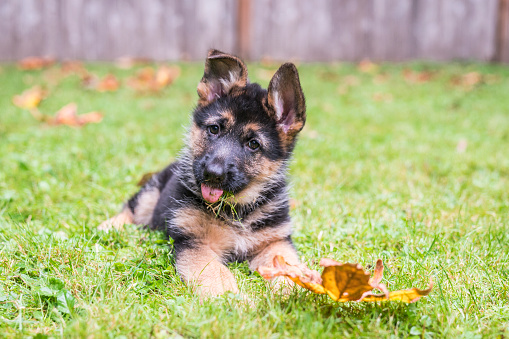
How to Keep Building Upon the Learned Tasks
Introduce More Obedience Commands
Once your pup has mastered the most essential commands, you can start incorporating new ones such as “place”, “leave it”, “heel”.
A simple way to train your pup in the “place” command is by standing close to its designated spot (usually this is its bed), and use a treat to get its attention. When your pup comes to its spot, you should click and reward it. Gradually you can start utilizing the cue word “place”, so that it knows that it will be rewarded if it comes to its spot.
In order to train your pup in the “leave it” command, you should put treats on the floor and cover them with your hand. Your pup is likely to want to get them (through mouthing, pawing, nose-nudging). Once it settles, you should start moving your hand. While it is looking in the opposite direction or otherwise is showing interest in the treats, you should click as a marker and reward your pup. After several repetitions you may try practicing with a leash on your pup. Throw several treats on the floor (keep track of the amount of the treats and not overfeed your pup) and cover them with your foot. If your pup remains calm, click with a clicker, then move your foot, and reward your pup. After several repetitions you can implement the cue words “leave it”. Say the chosen words/ words, put a treat on the floor and watch your canine’s reactions. If it remains calm, praise and reward it.
The treats you should use to reward your pup for being well behaved and not eating the treats on the floor should be of higher value of those put on the floor. That way the pup will learn that it will get a reward of a higher value and will remain motivated to exhibit the wanted behavior.
The “heel” command can be really helpful while outdoor. You should start practicing at a place without distractions. Show your pup a treat and then hold it in your hand. The hand holding the treat should be put against your left or right side of the body, depending on whether you are holding the treat with the right or the left hand. Then you should take a few steps. Your pup is likely to follow the treat in your hand. After several steps you should stop, click to mark the good behavior and reward your pup. After several repetitions you can start incorporating the “heel” cue word.
Keep Socializing Your Pup
We have already mentioned how important the process of socialization is. Over time you may start introducing your pup to people and animals outside your household. However, we would recommend that the dogs your pup meets are well-mannered and vaccinated. The more well-behaved canines your pup meets, the more likely it is to pick up on their social cues and learn to behave well around other dogs.
Command Combinations
Once your pup already knows certain tasks, you may try combining them, i.e. give your pup a command to sit, followed by a command to stay. Then you can give a command to come. Gradually you should start making the tasks more demanding and reward your pup only after it has performed the given task really well.
Watch for Unwanted Behaviors
During the process of teaching your pup how to interact with the world and the family, it is very likely that you will notice some unwanted behaviors, such as chewing, whining, barking, separation anxiety, reactivity. The earlier you recognize these behaviors and manage to address them, the better.
As a general rule, you should not pay attention to a pup who misbehaves, as that will teach him/her that way that it will get your attention. You should rather reinforce the wanted behaviors and try to redirect your pup’s attention. You should provide your pup with toys to keep your pup mentally stimulated, take it for walks, exercise it and leave it rest in its designated area. Marking the good behaviors and rewarding your pup when exhibiting these, will prevent it from misbehaving in the future. Teaching your pup what its boundaries are and what behaviors will bring the desired outcome, will motivate it to be well-mannered.
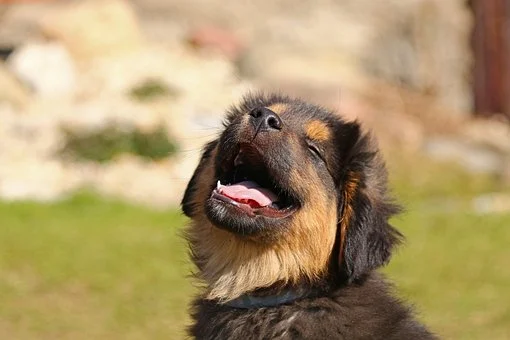
General Rules You Should Follow
Patience
You should be very patient...Always keep in mind that your pup is still learning and exploring the surroundings. Do not expect it to automatically understand everything you want to teach it. Also, you should consider your approach as an owner as well and determine if there may be mistakes on your part. It is common for new puppy owners to unintentionally reinforce unwanted behaviors, i.e. pay attention to the pup, when it misbehaves, reward it for bad behaviors, lose its temper...etc.
Consistency
Being consistent is as important as being patient. You should not give up on properly raising and training your pup when challenges occur. Make a schedule, try to stick to it and practice every day (or as often as you can).
Short Sessions
As mentioned above, training sessions should remain short- no longer than 10-15 minutes. Pups have a short attention span and once they get bored, they will not only stop performing the given commands but also will start pairing the training sessions with something negative.
Practice in Various Environments
In order for your pup to master a certain command, it should be able to perform it regardless of the surroundings. You should always start practicing at home and gradually increase the distractions- move to a more noisy room, to the garden, to the local park...Check if there are pet-friendly facilities nearby and go visit them with your pup.

